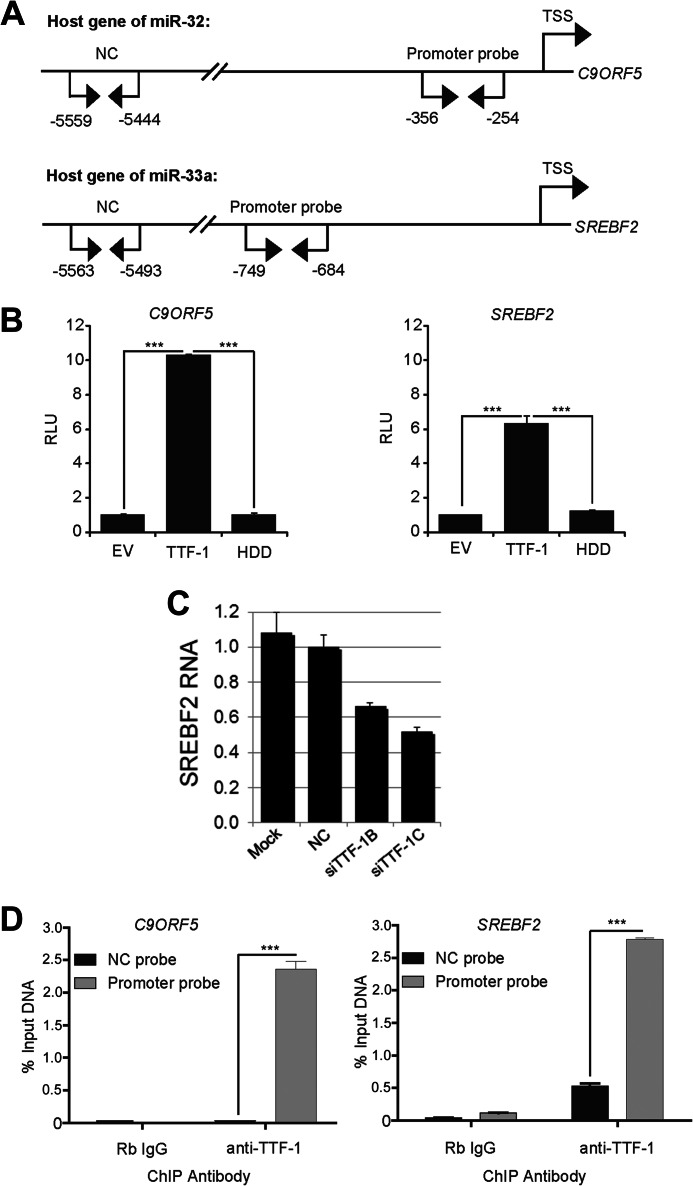FIGURE 4.
TTF-1 binds to and activates transcription from the promoters of the miR-32 and miR-33a host genes. A, diagram of the promoter regions of the miR-32 and miR-33a host genes, C9Orf5 and SREBF2, respectively. Locations for negative control (NC) and promoter PCR primer pairs used in the ChIP analyses are shown relative to the respective gene's predicted transcriptional start site (TSS). B, A549 cells were transfected with the indicated expression vector (empty vector (EV), TTF-1, or a TTF-1 homeodomain deletion mutant, HDD) and a luciferase promoter reporter construct for C9Orf5 (miR-32) or SREBF2 (miR-33a). Luciferase assays were performed 24 h after transfection (n = 4). y axis, -fold change in relative luminescence units (RLU). C, TTF-1 knockdown resulted in a decrease of SREBF2 RNA. NCI-H441 cells were transfected with mock or a negative control oligonucleotide or an individual siTTF-1. After 48 h, RT-QPCR was conducted to quantify the expression level of SREBF2 RNA (n = 3). SiTTF-1B and SiTTF-1C were from Dharmacon/Thermo Scientific (catalog nos. D019105-04 and D019105-17, respectively). D, chromatin immunoprecipitation of endogenous TTF-1 in NCI-H441 cells. Sheared chromatins were precipitated with either rabbit immunoglobulin (Rb IgG) or anti-TTF-1 antibody and subsequently analyzed using QPCR location probes shown in A (n = 3). Error bars, S.D. ***, p < 0.001.

